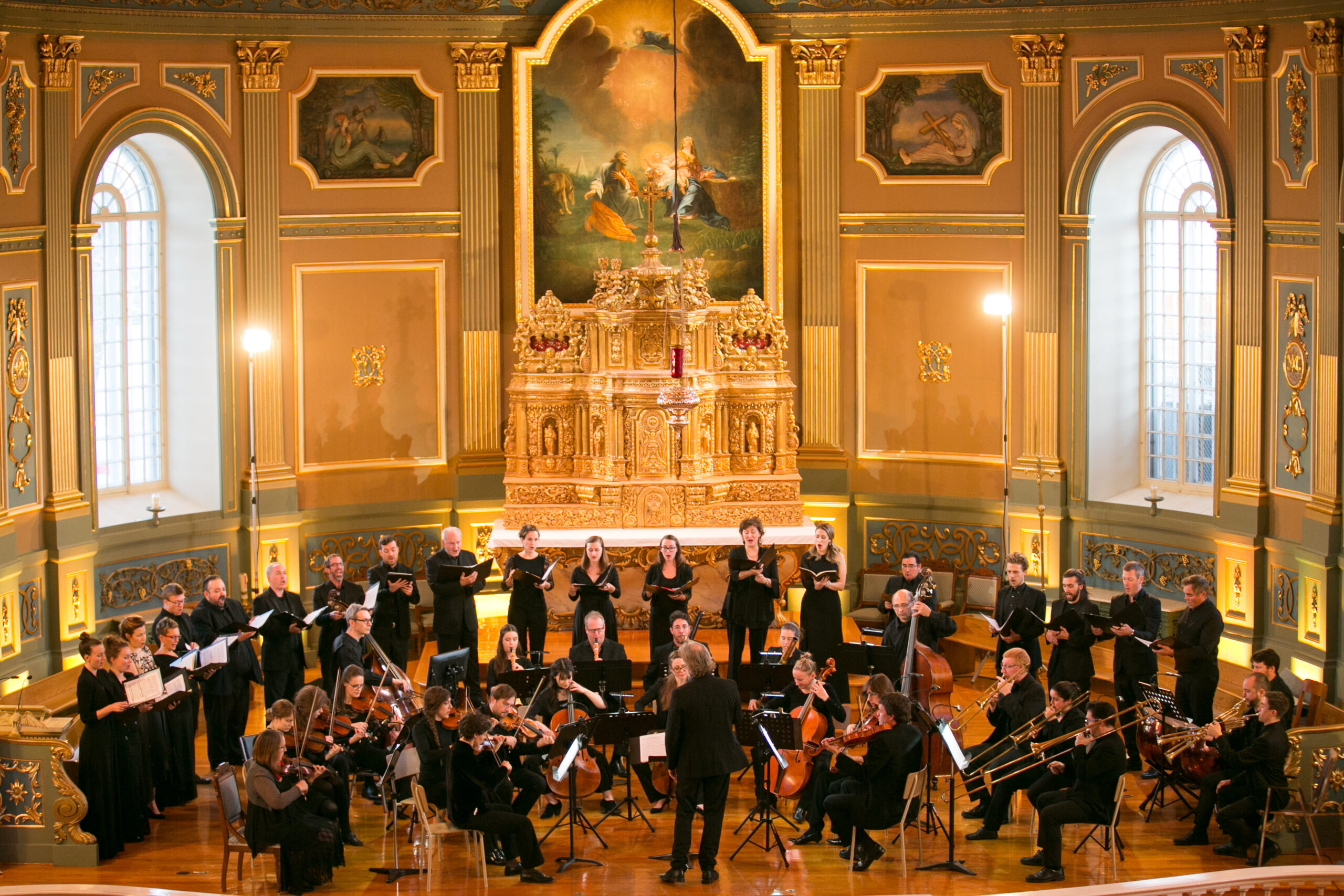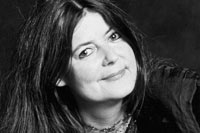The Chan Centre for the Performing Arts
Jonathon Adams, Baritone; L’harmonie des Saisons; Susie Napper, Viola da Gamba
The program name ‘Lab’rinths’ evokes the spiritual mystery and human turmoil captured so clearly by Purcell and his contemporaries. Taken from a collection of sacred songs published in 1688 by Henry Playford, ‘Harmonia Sacra’, these devotional songs by Purcell can often be interpreted as biblical ‘mad scenes’: they offer the listener a glimpse into his most dramatic and harmonically adventurous explorations of personal loss, confusion, spiritual angst and delirious ecstasy. These songs will be sung by baritone Jonathon Adams and accompanied by Mélisande Corriveau on viola da gamba and Eric Milnes on organ and harpsichord. Interpolating these vivid scenes are pieces written for two viols by contemporaries of Purcell, including the works of John Jenkins, William Lawes and John Withy. Susie Napper will join Corriveau and Milnes for these instrumental selections.
This concert is generously supported by Dr. Katherine E. Paton
Please note that this concert will be filmed.
Programme
In the black dismal dungeon
Henry Purcell (1659-1695) Text by William Fuller (1608-1675)
Suite no 2 in C major
Pavan on a theme by Alfonso Ferrabosco
William Lawes (1602-1645)
How have I strayed
H. Purcell
Text by William Fuller
Suite in D Major/minor
Ayre, Almand, Almand
John Jenkins (1592-1678)
Tell me, some Pitying Angel
(The Blessed Virgin’s Expostulation)
H. Purcell
Words by Nathaniel Tate (1652-1715)
Chaconne from the Suite in D Major
Godfrey Finger (c.1660-1730)
How long great god
(The Aspiration)
H. Purcell
Text by John Norris (1657-1711)
Fantasia in G Major
John Withy (Fl. c.1650)
With sick and famished
H. Purcell
Air no 5 in d minor
J. Withy
Let the night perish – a minor
JOB’s Curse, Translated by Dr. Taylor Bishop of Down in Ireland
H. Purcell
Words by Jeremy Taylor (1613-1667)
Lord what is man A Divine Hymn
Two in one upon a Ground
An evening hymn On a Ground
H. Purcell
Texts by William Fuller
Programme Notes
On Purcell’s Devotional Songs
Jonathon Adams
“How have I strayed, my God, where have I been
Since first I wandered in the maze of sin?
Lord, I have been I know not where,
So intricate youth’s follies are;
And age hath its lab’rinths too,
Yet neither hath a wise returning clue[…]
‘Tis thou, O Lord, must bring me home,
Or show the way,
For poor souls have thousand ways to stray,
Yet to return but only one.”
Eight of Henry Purcell’s devotional songs form the centre of our program entitled Lab’rinths. The text above is by Dr. William Fuller (1608–1675) and is taken from the song “How have I strayed” Z.199 published by Henry Playford in 1688. From tormenting questions of faith, guilt and despair, to hope and ecstasy, these eight songs run the emotional gamut and rival Purcell’s most dramatic music for the theatre for sheer inventiveness and expressive realism. With the selection of these eight songs we intend to plunge the audience into the rich core of sacred English song in the mid to late 17th century.
I interpret all but one of these songs as “biblical mad scenes”. I use the term ‘scene’ because of the length and complexity of these heightened emotional depictions of some of the bible’s most evocative, heart rending stories. Whether it is the sonic illumination of the Virgin Mary’s panic and subsequent despair at having lost the twelve year old Jesus at the temple in “Tell me, some pitying angel”, or the intimate and highly personal confession of a fallen Christian in “In the black dismal dungeon of despair”, we are invited into each scene by way of Purcell’s daring and seemingly fearless use of melody, harmony and speechlike rhythm.
Purcell is perhaps at his most harmonically adventurous in his setting of George Herbert’s (1593 – 1633) text “With sick and famished eyes”. The song begins with a descending tritone, evoking a kind of off balance, queasy restlessness and foreshadowing the poem’s bleak, desperate conclusion:
“…My love, my sweetness, hear!
By these thy feet, at which my heart
Lies all the year,
Pluck out thy dart,
And heal my troubled breast, which cries,
Which dies.”
The final piece of the program departs from the bitter, doubting realm of the previous seven songs to show Purcell’s skill with a ground bass. Built on a repeating harmonic pattern, Purcell paints a tender, world-weary, but ultimately joyful anthem at the conclusion of a life. The text is by William Fuller:
“Now, now that the sun hath veil’d his light
And bid the world goodnight;
To the soft bed my body I dispose,
But where shall my soul repose?
Dear, dear God, even in Thy arms,
And can there be any so sweet security!
Then to thy rest, O my soul!
And singing, praise the mercy
That prolongs thy days.
Hallelujah!”
On the Duets for Viols
Susie Napper
When His Majesty Charles II returned from exile in 1660, England was ready to put the bitter taste of Cromwell’s Puritanism behind her. The country was ripe for drastic change and the hope of a return of the simple pleasures that had been prescribed during the eleven years of civil war. Charles arrived home from the continent in a bluster of wine, women and song! The song, however, was new to the Fairest Isle!
Under the influence of his distant cousin, the young Louis XIV, and enamoured of the latest, most fashionable continental musical styles, Charles established his own “24 violons” and modernized his “private music” banning those old fashioned viols he now despised! The greatest composers might learn to adapt their ditties to the all too stylish French dance suites and chicer-than-thou Italian sonatas, but there were those who regarded the noble English “Fantasia” or “Fancy” and its virtuoso divisions to be amongst the greatest of musical forms.
Thomas Mace despised the “new-fangled violin,” and argued fervently for the merits of the viol. Viol consorts were one of the few purely instrumental musics of the Renaissance. A mainstay of musical life in the British Isles for a hundred and fifty years, and a source of comfort for many amateurs during the arduous years of the interregnum, its advocates wouldn’t let this gracious tradition suffer an ignominious death at the hands of some continental fad for frivolous forlanes or trendy trios! However fantasias were soon replaced by forlanes and trios as composers adopted and adapted them for their viols.
The viol retained a place in English musical life despite the brutal onslaught of the new- fangled fiddle. In fact the virtuosity of the violin was a catalyst for the elaboration of viol technique. Christopher Simpson’s Divisions, which the composer and his colleagues would have improvised, are the perfect example of extended techniques reaching into the stratospheres of the viol’s range. Simpson’s Divisions, like the William Lawes and Purcell’s Two in One Upon a Ground, are composed over a repeated bass played by a keyboard or other plucked instrument, completing the tea party. Godfrey Finger, winner of a 1701 competition against Purcell’s cousin or younger brother, Daniel, takes the viols to extremes of virtuosity in his Chaconne. John Jenkins, grandfather of viol composer-performers, survived most of this revolutionary century, living into his noble 80s. His compositions transitioned eloquently from consort to divisions to the dance suite, always abreast of the latest trends.

Jonathon Adams, Baritone
EMV’s 2021 Artist-in-Residence, Jonathan Adams was born in amiskwaciwâskahikan (Edmonton, Canada). Jonathan is a Two-Spirit, nêhiyaw michif (Cree-Métis) baritone and performance artist. In concert, they have appeared as a soloist with Philippe Herreweghe, Sigiswald Kuijken, Hans-Christoph Rademann, Václav Luks, Ensemble BachPlus, Vox Luminis, il Gardellino, and B’Rock Orchestra at Opera-Ballet Flanders. Jonathon is a featured soloist in the film MESSIAH / COMPLEX produced by Against the Grain Theatre and the Toronto Symphony Orchestra (2020). Jonathon was a fellow of the Netherland Bach Society in 2020 and performs regularly with Amsterdam Baroque Orchestra & Choir. Future solo engagements include recording and concerts with il Gardellino, concerts with Servir Antico, Les Voix Humaines, Ensemble Caprice, L’Orchestre Baroque Arion, Studio de Musique Ancienne de Montréal, L’Harmonie des Saisons, and Tafelmusik Baroque Orchestra amongst others.
Thanks to a long term ‘Creating, Knowing and Sharing’ grant from the Canada Council for the Arts, 2021 witnessed the world premiere of Adams’ performance piece nipahimiw / the plaint with collaborators Christi Belcourt, Reneltta Arluk, Evan Ducharme, Susie Napper and Catalina Vicens. nipahimiw / the plaint is slate for presentation at the Art Gallery of Ontario, Vancouver’s UBC First Nations Longhouse, Montreal’s McCord Museum, Quamajuq Inuit Art Museum (Winnipeg) and the National Gallery of Canada in Ottawa.

L’harmonie des Saisons
Founded in 2010 by co-directors Mélisande Corriveau and Eric Milnes, Ensemble L’Harmonie des Saisons inspires audiences with its fresh and unique interpretive approach to period performance. After presenting forty different programs in over 150 concerts, the ensemble continues to garner acclaim throughout Quebec, Canada, and on its tours abroad. Their recordings on ATMA Classique, Las Ciudades de Oro (2016) Pardessus de Viole (2017), and Marin Marais: Badinages (2020) have been the recipients of the coveted JUNO prize, the Prix Opus, Radio-Canada’s Recording of the Year, was featured among the CBC’s Top Ten CDs of the Year, and was placed on the Apple Music Top Ten Classical Recording list (2020).
The ensemble is host to a prestigious series of concerts in the Eastern Townships of Quebec, and has been featured at festivals across Europe, North and South America. They are the recipient of generous grants from the Conseil des Arts et Lettres du Québec, the Canada Council for the Arts, the Musicaction Foundation, and a number of Montérégie and Eastern Township municipalities. This past season they met the challenge of the pandemic by presenting over fifty of the ensemble’s performers in a series of eight online concerts on the Canada Classique streaming platform.
Upcoming productions include performances on tour of Bach’s St. John Passion and Magnificat, Cantatas of CPE and JS Bach, Handel’s Messiah, and a premiere performance of Faure’s Requiem on period instruments. In October will be released a duo CD of the music of JS Bach on ATMA Classique, followed by plans for four recordings in 2021-2022: Bach Arias and Chamber Music, Bach Concerti, Vivaldi Concerti, and French Baroque Chamber music.

Susie Napper, Viola da Gamba
Cellist, gambist, continuo player par excellence, Susie Napper is known for her colorful, even controversial performances of both solo and chamber repertoire of the 17th and 18th centuries. Having spent her childhood in an artistic milieu in London, in her late teens she moved to New York to study at the Juilliard School, then to the Paris Conservatoire. San Francisco followed, where, after a foray into contemporary music, she co-founded and directed the Philharmonia Baroque Orchestra.
Since then, she has spent two decades with a foot on either side of the Atlantic as principal cellist with several groups including Stradivaria in France, the Studio de Musique Ancienne de Montréal and Les Boréades in Montreal, and the Trinity Consort of Portland. Her concert tours have taken her as far afield as China, Japan, New Zealand, India, the Middle East, as well as most European countries.
As a member of the very active viol duo Les Voix humaines, she has discovered a new facet of musical expression in the form of musical arranging, thus providing an endlessly fascinating new repertoire for two viols. Susie Napper teaches at McGill University, and founded the Festival international Montréal Baroque which is presented in Montreal in June since 2001. She was awarded the Prix Opus 2002 for “Personality of the Year” by the Conseil québécois de la musique.
Her recordings, which include most of the known repertoire for two viols, can be heard on Harmonia Mundi, EMI, Erato, ADDA, CBC Records, Naxos, and most notably on the ATMA label. But her true vocation is not on the concert stage or the recording studio. The kitchen is the center of her domain, where she creates dishes both colorful and controversial for her own pleasure as well as that of her guests.



